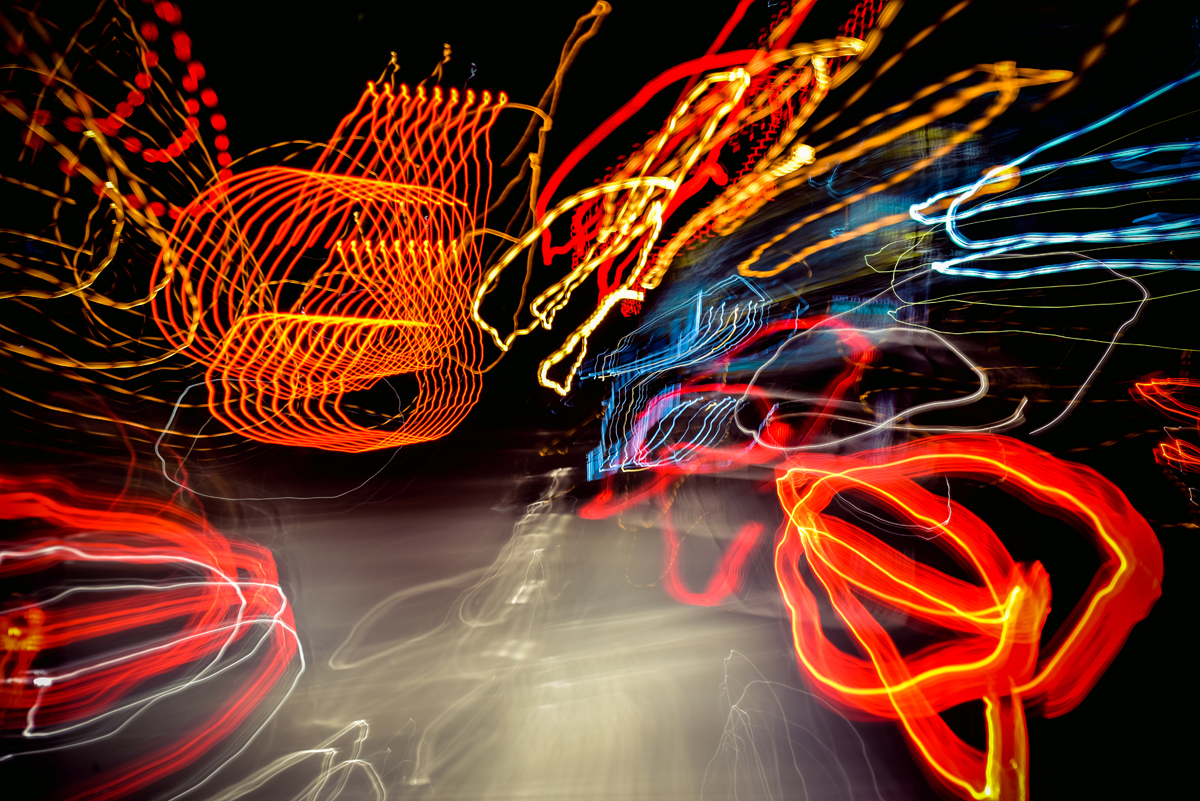Electric Signs
The 2017 National Electrical Code
What you need to know about the latest electric sign requirements.
Published
7 years agoon

The National Electrical Code® (NEC®) is modified, updated and published on a three-year cycle to accommodate changes in technology and the need to harmonize or otherwise clarify various electrical requirements and corresponding language. Like other types of electrical devices, electric signs have evolved significantly – especially since the beginning of the current century. In particular, during this period, the advent and proliferation of solid-state lighting systems (e.g. LED lighting) and photovoltaic (solar) power systems have created the need to incorporate corresponding requirements into the NEC. Sign industry organizations and other advocates have collaborated in the code-making process in efforts to more closely reflect the evolving state of the art in electric signs, to facilitate understanding of NEC requirements by sign installers, and to support consistency in interpretations of these requirements by local jurisdictions throughout the nation.
In order to help the sign industry better understand the nuances of the NEC’s 2017 iteration, the Foundation for the Advancement of the Sign Industry (FASI) contacted David Servine at the Intl. Sign Assn.’s (ISA) Sign Expo in Las Vegas, where he helped present a seminar on the new NEC. In his 55 years in the electric-sign industry, Servine has served for decades as a member of Underwriters Standards Technical Panels UL 48, 879 and 879A, as an associate member of the Intl. Assn. of Electrical Inspectors, and as a member of ISA’s Electrical Subcommittee. He was honored last year with the sign industry’s highest honor – the Kirk L. Brimley Distinguished Service Award – and filled us in on the latest NEC updates and revisions.
When was the 2017 NEC finalized?
The 2017 edition of the NEC was issued by the NFPA Standards Council August 4 with an effective date of August 24, 2016. In turn, each state ratifies the NEC with local amendments before it’s enforced. You can track the status of adoption, state by state, at the following link: www.nema.org/Technical/FieldReps/Documents/NEC-Adoption-Map-PDF.pdf.

What are the most significant changes since the 2014 NEC?
Three additions are significant – two in Article 600 and one in Article 100 Definitions:
1) Class 2 cable applications for LEDs are relocated from Article 725.154 to new tables in Article 600, which pertain to electric signs [600.33(A)(1), 600.33(A)(2)]. This change addresses the fact that references to Table 725.154 and Substitution Table 725.154(A) in 600.33 of the 2014 NEC do not provide a clear path for electric-sign manufacturers, Nationally Recognized Testing Laboratories (NRTLs) or the Authority Having Jurisdiction (AHJ) to determine the appropriate Class 2 sign cable application for the specific installation location environment.
AdvertisementThis was the genesis of the new Table 600.33(A)(1). Listed, power-limited cable types germane to the installation location environment of Class 2 power-limited sign circuits were extracted from 725.135 and Table 725.154, Table 725.154(A) and UL’s White Book category: Power-Limited Circuit Cable (QPTZ). This was submitted as Public Input No. 3600 and accepted by CMP 18 with certain changes and additions. This change eliminates the necessity of searching for Class 2 cable applications outside of Article 600, which in previous editions of the NEC lacked a readily identifiable reference for electric signs.
2) A new Article 600.34 that applies to Photovoltaic Powered Signs has been added.
3) The definition of “structure” has been changed in Article 100 to distinguish electrical equipment from the structure to which it’s attached. Electrical equipment, such as electric signs, is certified by a qualified electrical testing laboratory (QETL) and therefore does not require inspection of its factory-installed wiring at the time of installation by the AHJ (90.7). The structural element of the installation is not included in the listing of the electrical equipment, and this aspect is subject to local rules effective in the jurisdiction where the installation occurs.
Other significant new additions to Article 600 include field marking requirements. Signs that have been retrofitted with LEDs will require permanent markings denoting that the original illumination system has been changed, along with the kit manufacturer and installer’s identifier [600.4(B)(1)(2)(3)].
Signs with remote disconnect switches that are not within sight of a sign will require a marking identifying the location of the disconnecting means 600.6(A)(2).
What was your contribution to this iteration of the NEC?
During the 2017 NEC cycle, I worked on and submitted 17 Public Inputs and eight Public Comments on behalf of ISA’s Electrical Code and Standards Subcommittee. As such, I drafted the input and compiled the necessary substantiation. This was a collaborative effort with contributions by Randy Wright of the United States Sign Council, especially with regard to creating the new tables for Class 2 cable.
AdvertisementIn terms of debate, or complex issues, how would you rate this year’s discussion, compared to other years?
In every NEC cycle, some input for new proposals results in disagreements and intense debate among industry participants. During the 2017 cycle, compiling the new application table for Class 2 Cable in 600.33 drew the most discussion, and this wasn’t resolved until after a Notice of Intent to Make a Motion and a subsequent Certified Amending Motion (CAM 70-21) had been resolved. This entailed making further modifications to the table as previously accepted by the Code Making Panel (CMP) 18 for publication in the 2017 NEC.
Were there any significant procedural changes this year with regard to making changes?

Yes. The formal code-making procedure, which had been in place for multiple decades, was revised. The former “Proposal” period was changed to “Input Stage” and the former Report on Proposals (ROP) was discontinued and renamed “First Draft Report.” The “Comment Stage” followed, but the formal Report on Comments (ROC) was discontinued. Additionally, activities on CMP 18 could be viewed in real time digitally on NFPA’s Terra View website.
How many “sign representatives” were involved in this year’s changes? Does this represent any change from 2014?
The sign industry was represented by Wes Wilkens, ISA Principal, Bill Dundas, ISA Alternate and Randy Wright, RKW Consulting. Paul Yesbeck (ACU Sign Corp.) was the National Electrical Contractors Association (NECA) Alternate but, because of NECA policy, did not participate during the industry Input Stage. CMP 18 Chairman Bobby Gray, the principal for NECA, appointed Randy Wright to chair a task group for Article 600 input which was divided into three committees. Lee Hewitt (UL), Jack Jamison Jr. (IAEI) and Paul Costello (NECA and IBEW) represented Committee 1. Committee 2 included Rick Hollander (IAEI), Donald Berlin (Intermatic) and Chuck Kurten (UL). Populating Committee 3 were Wes Wilkins, ISA Principal, Bill Dundas, ISA Alternate, and Paul Yesbeck, NECA.
To what extent has dynamic digital signage impacted the 2017 NEC?
Digital signs are considered electrical utilization equipment and are subject to the same NEC requirements as all other electric signs.
To what extent were there any changes with regard to LEDs, fluorescent lighting and/or neon?
The rules in 600.33 previously were specific to LED sign illumination systems. This has been amended to apply to all Class 2 illumination systems rather than being limited exclusively to LEDs. This change harmonizes with the secondary wiring requirements in 600.33 and Table 600.33(A)(1)(2) for power-limited cable applications.
AdvertisementWhat are the sections of the NEC that impact signage?
In addition to the principal Article 600, Electric Signs and Outline Lighting, Chapters 1-4 of the NEC apply generally to all electrical installations. Chapter 6, Article 600 supplements or modifies Chapters 1-7 [e.g., 250.3 which mandates grounding and bonding for electric signs is modified by 600.7(B)(1) Exception: Remote metal parts of a section sign or outline lighting system only supplied by a Class 2 power supply shall not be required to be bonded to an equipment bonding conductor].
The NEC regulations for safe use of electricity are national in scope; however, each jurisdiction has the prerogative to amend and interpret the NEC. Knowledge of the NEC and local rules in the jurisdiction are essential because the authority having jurisdiction at the installation location has the final say in the approval process. So, stay active with your local sign association, whose job it is to help you stay abreast of these issues. However, the vast majority of AHJs do conform to the NFPA and IAEI interpretation of the NEC. Paying attention to these technical changes now will help prevent any unpleasant surprises as they trickle down to a locality near you.

SPONSORED VIDEO
Introducing the Sign Industry Podcast
The Sign Industry Podcast is a platform for every sign person out there — from the old-timers who bent neon and hand-lettered boats to those venturing into new technologies — we want to get their stories out for everyone to hear. Come join us and listen to stories, learn tricks or techniques, and get insights of what’s to come. We are the world’s second oldest profession. The folks who started the world’s oldest profession needed a sign.
You may like

Fiery Releases SignLab 11

21 Larry Albright Plasma Globes, Crackle Tubes and More

2024 Women in Signs: Christine Hykawy
Subscribe

Bulletins
Get the most important news and business ideas from Signs of the Times magazine's news bulletin.
Most Popular
-

 Tip Sheet2 days ago
Tip Sheet2 days agoAlways Brand Yourself and Wear Fewer Hats — Two of April’s Sign Tips
-

 Business Management1 week ago
Business Management1 week agoWhen Should Sign Companies Hire Salespeople or Fire Customers?
-

 Women in Signs1 week ago
Women in Signs1 week ago2024 Women in Signs Award Winners Excel in Diverse Roles
-

 Real Deal3 days ago
Real Deal3 days agoA Woman Sign Company Owner Confronts a Sexist Wholesaler
-

 Editor's Note7 days ago
Editor's Note7 days agoWhy We Still Need the Women in Signs Award
-

 Maggie Harlow2 weeks ago
Maggie Harlow2 weeks agoThe Surprising Value Complaints Bring to Your Sign Company
-

 Line Time1 week ago
Line Time1 week agoOne Less Thing to Do for Sign Customers
-

 Product Buying + Technology1 week ago
Product Buying + Technology1 week agoADA Signs and More Uses for Engraving Machines














